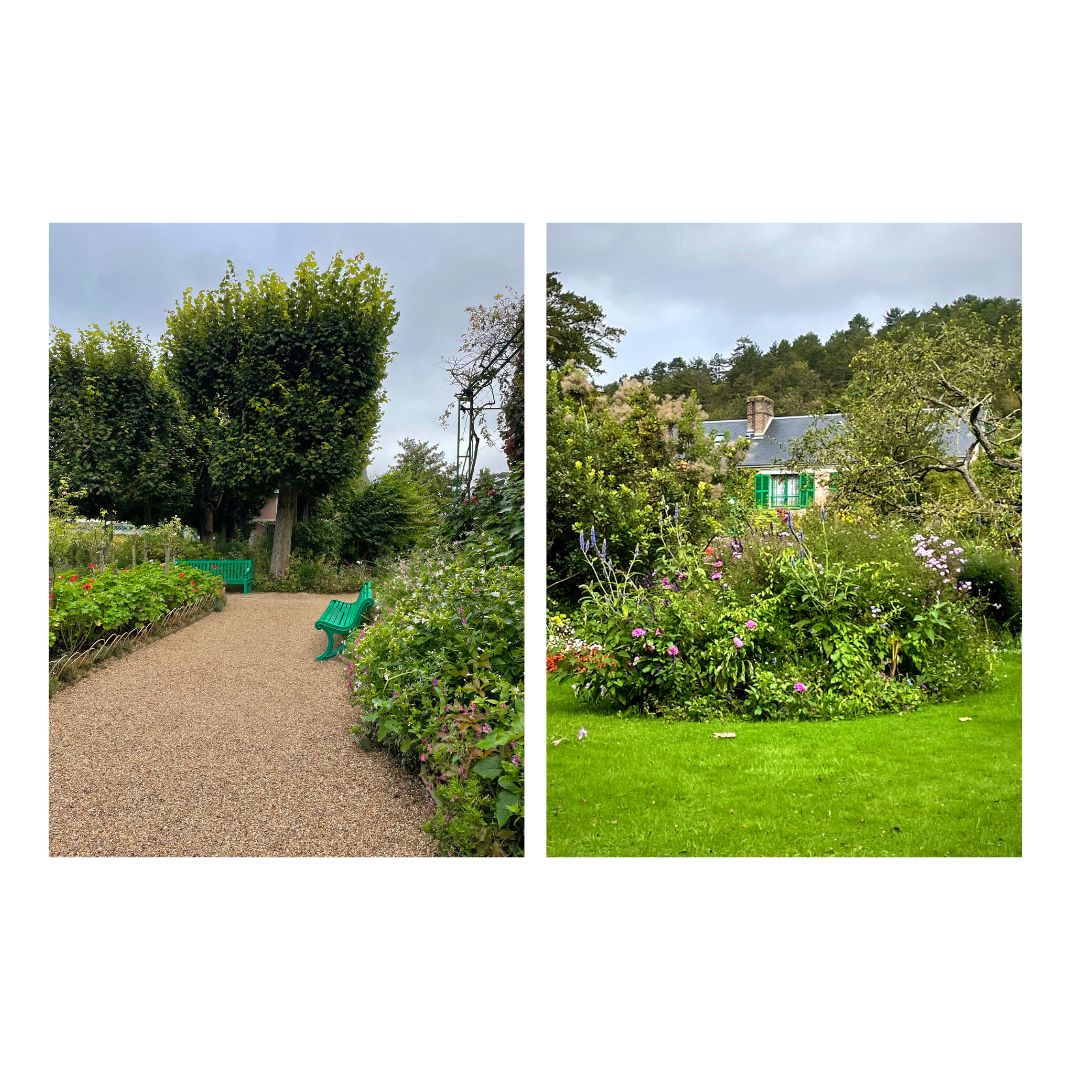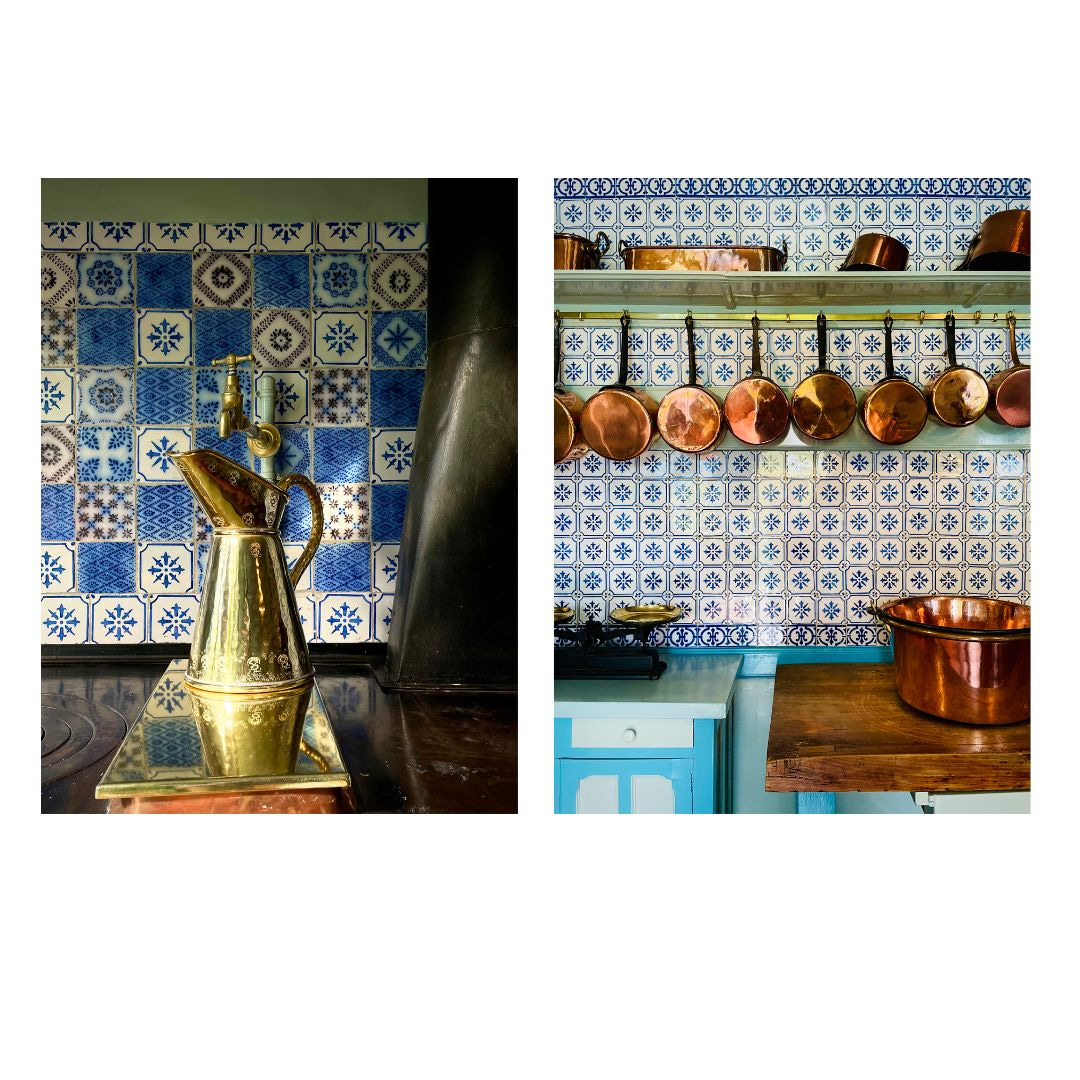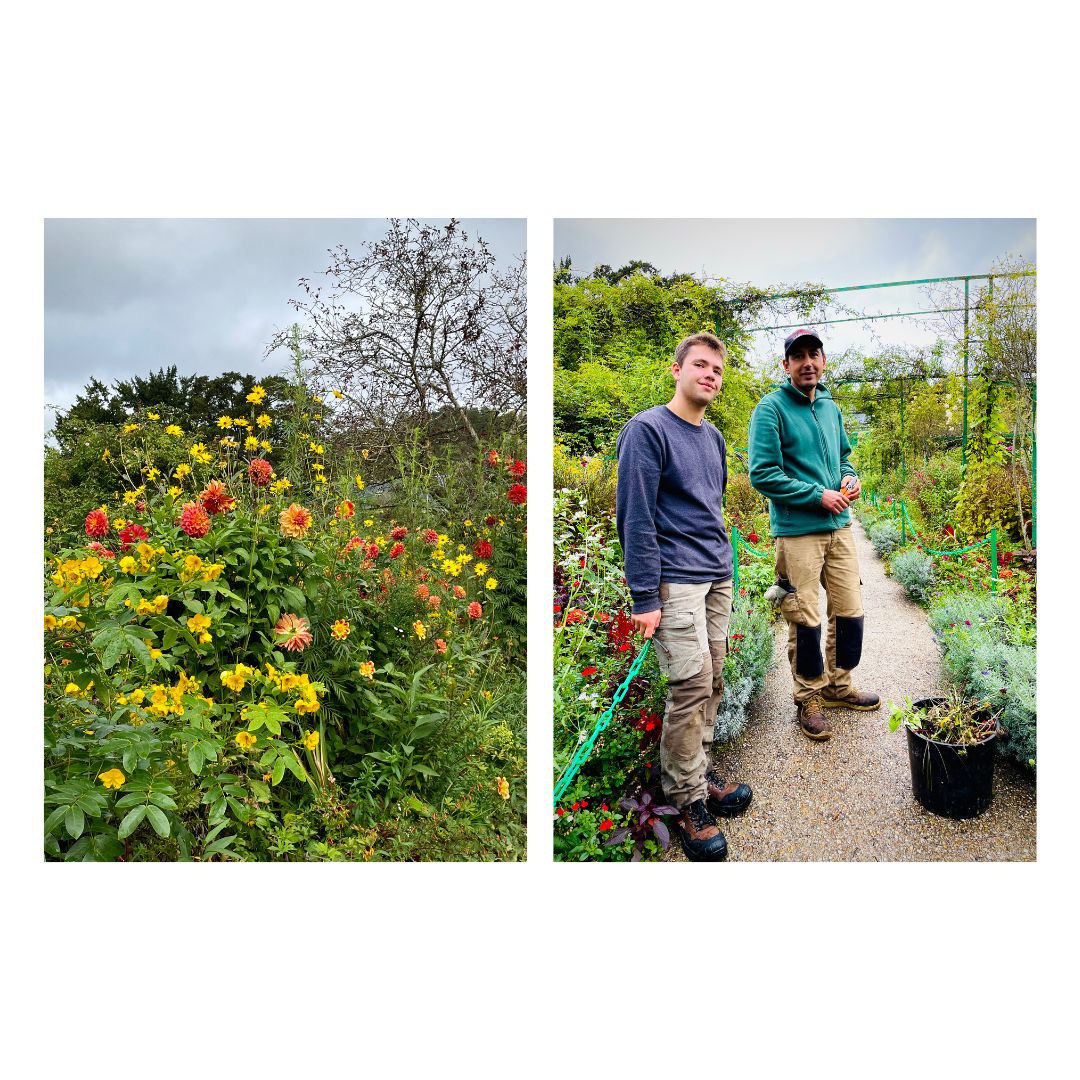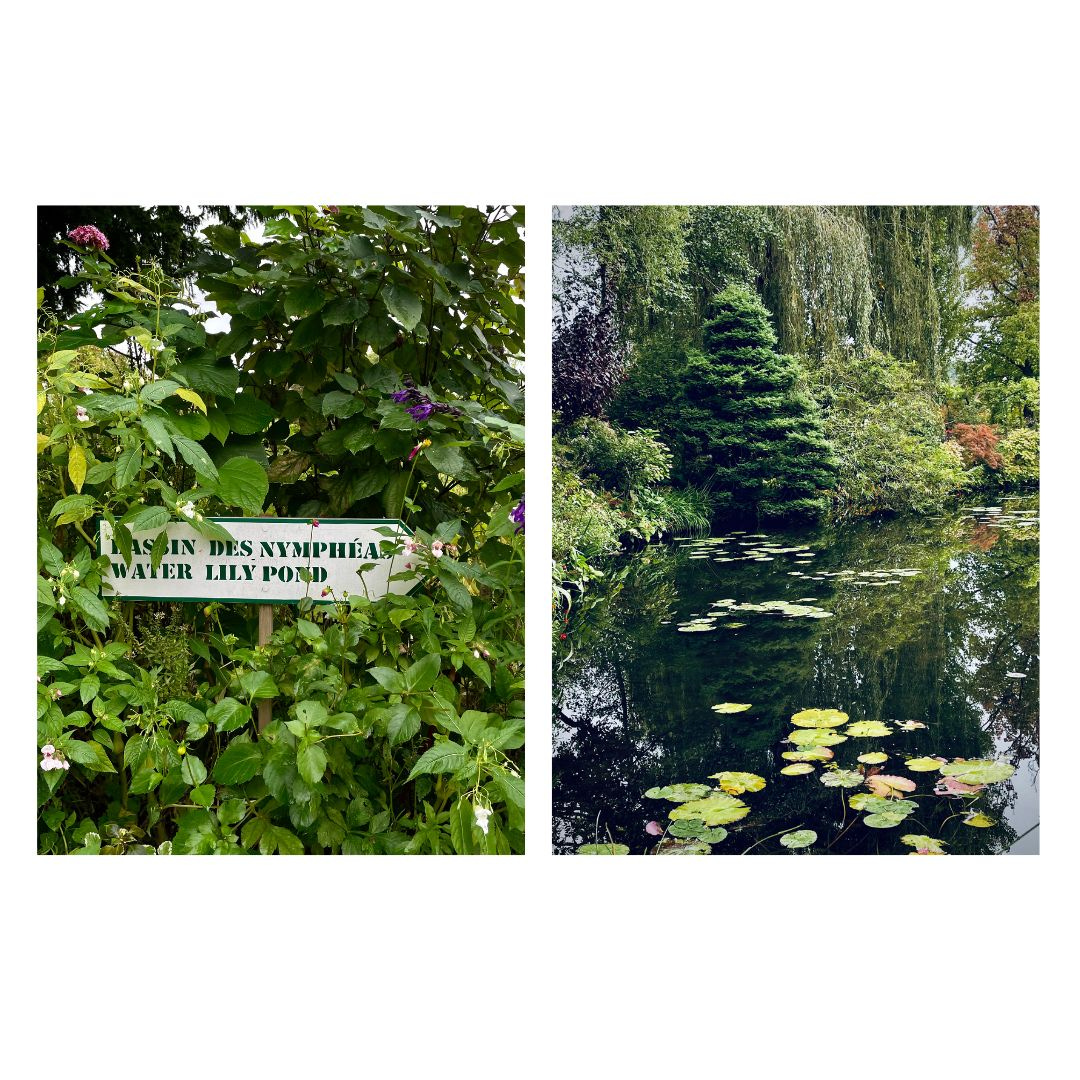I have this memory of Mom taking me and my siblings to an art gallery in Manila when we were young. The walls were filled with paintings that stretched from floor to ceiling, while the spaces below displayed an eclectic mix of antiques and sculptures. While Mom chatted with the owner, I would wander around, examining the paintings within my line of sight. I found myself studying the brushstrokes and color blends of a piece. As I stepped back, the image transformed into a landscape. Whoa! It felt like I’d uncovered a secret—something magical that I alone had unearthed.
Later, I learned that these were called Impressionist paintings, and Claude Monet’s London Fog series—depicting the same scene at various times of the day—was among the works featured in an art book I stumbled upon in the grade school library. This became my first entry point to his work.
Rain began pouring relentlessly on our bus ride to Giverny two months ago—the village where Monet lived for 46 years until his death in 1926. Tina and I exchanged disappointed looks, unsure if the weather would improve. Fortunately, by the time we stepped off the bus, it had eased into a light shower.
There were at least 30 of us making our way through the narrow walkways of the water lily garden and the cramped hallways of Monet’s home. We decided to wait until the crowd had dispersed, then I entered and photographed some of the rooms for a second time.
Monet first rented this farmhouse in 1883. Once his paintings began to sell, particularly in the U.S. where Impressionism gained widespread popularity through the efforts of his longtime art dealer, Paul Durand-Ruel, he purchased the property seven years later. He was 50 years old.
Before this, he struggled financially for 30 years. Sometimes, he could not afford to buy new canvases that he would paint over them. He wrote letters to his friends requesting for financial assistance to pay for food and other basic needs.
At the age of 26, shortly after the death of his first wife, Camille, and following a series of rejections, Monet jumped into the Seine to end his life. However, he swam back to shore, realizing in that moment that he wanted to live and continue painting.
At Giverny, Monet settled into a routine, often starting his day by painting at first light or tending to his garden. He painted throughout the day, pausing only to eat meals with his family. Occasionally, he hosted guests, taking longer breaks to entertain them or engage in deep conversations about art, politics, and life. However, work always came first.
Japanese artwork by Katsushika Hokusai, Ando Hiroshige, and Utagawa Kuniyoshi adorned his walls. These were replicas, but the originals were woodblock prints known as ukiyo-e. While I knew his water garden was heavily influenced by Japanese aesthetics, I didn’t realize that he was also a collector who took inspiration from their work.
Afterward, Tina and I strolled the flower garden outside the farmhouse.We were delighted to see that many were still in bloom, including dahlias, peonies, asters, and roses. I spotted two gardeners performing maintenance work along one of the lanes.
Excusez-moi, parlez-vous anglais? I asked.
"Yes, we speak English," the younger one replied.
"Thank you for taking care of this beautiful garden. Your work is so important, and I just wanted you to know that."
Surprised, they smiled and looked at each other.
“Thank you,” they responded shyly.
I asked if I could take their portrait, and they kindly agreed. Unfortunately, I forgot to ask for their names.
After Monet’s death, an underground walkway was built between the farmhouse and the water garden to accommodate the influx of tourists. The wet path had no traction, and a line ran down the center to direct foot traffic. I walked slowly, careful not to slip. After emerging from the stairwell toward the pond, we passed rows of slender bamboo trees lining the perimeter before entering the main garden and pond.
Monet, always the tenacious artist, worked on the Water Lilies series for 30 years. As he advanced in age, and with his deteriorating eyesight, he became a recluse plagued with doubt and was protective of this work. Perhaps because he relentlessly iterated and experimented that he felt they were unfinished canvases, often questioning its quality.
Monet only agreed to gift the Water Lilies panels to the French government after his close friend, former Prime Minister Georges Clemenceau, persuaded him. Clemenceau remained a steadfast presence during these challenging times, visiting Giverny regularly to encourage Monet to keep painting and to remind him of his significant contribution to the arts. He was even at his bedside when he passed away in 1926.
It is thanks to Clemenceau that Monet’s legacy lives on at the Musée de l'Orangerie. He honored Monet’s wishes offering viewers an immersive, almost spiritual experience through light, color, and the beauty of nature.
I have yet to experience the oval-shaped Water Lilies panels up close, but I promise myself I will on my next trip to Paris. Perhaps the magic I once felt as a kid in that art gallery in Manila will be rekindled.
In the meantime, I will be watching this documentary (available through Kanopy at your local Public Library).
See you all next Sunday!
Thank you for inviting me to join you every Sunday in your inbox. I am grateful and appreciative for spending a small part of your day with me. If you have the means to support Sundays with Stella, please consider becoming a paid subscriber. Those who contribute financially will ensure that this place of inspiration, creativity, and meaning remains free and open to all.
ANOTHER WAY TO SUPPORT SUNDAYS WITH STELLA
I've listened to your requests and created a support page on my website. Now you can contribute to 'Sundays with Stella' in any amount using your credit card, PayPal, or Venmo. Your generosity is truly appreciated!











It's odd to think of Monet as a struggling artist. Depressed, and throwing himself into the Seine, it seems almost cliche. Today, all we see is the genius, again, almost a cliche.
A gorgeous post, Stella - I learned so much! I visited Monet's garden when I was 18, before I fell in love with his art. Years later a friend and I went halves on a set of Monet prints - I think it was a collect-six-tokens-and-send-a-tenner kind of magazine offer or something - and because the friend was a rather formidable type, and because I knew she wanted the three waterlily prints, well, when she asked me to choose I said 'Oh, I'd really love the London three, please!' with empty-hearted nonthusiasm.
Guess what? I grew to absolutely LOVE those three pictures, and later painted the bedroom of the flat I moved into a lovely shade of creamy gold to complement them. Choosing THOSE prints had been the right thing for me all along!